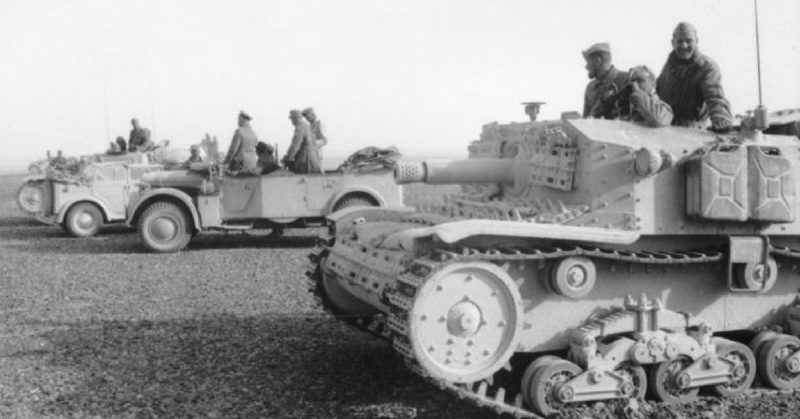In November 1942, American and British forces landed in Tunisia. It was part of Operation Torch, the invasion that brought America into the Mediterranean theater of WWII. From there, they advanced east. It was the beginning of the first battle for Tunisia.
Anderson Versus Nehring
For the duration of the landings, the troops in Tunisia were commanded by the American General Ryder. It was a political decision taken to appease the local French authorities who could negotiate better with an American rather than a British Officer. Following the landings, the more experienced British were put in charge of the offensive, in the form of Lieutenant General Kenneth Anderson.
Facing Anderson on the German side was General Nehring, a battle-scarred veteran of the fighting further east.
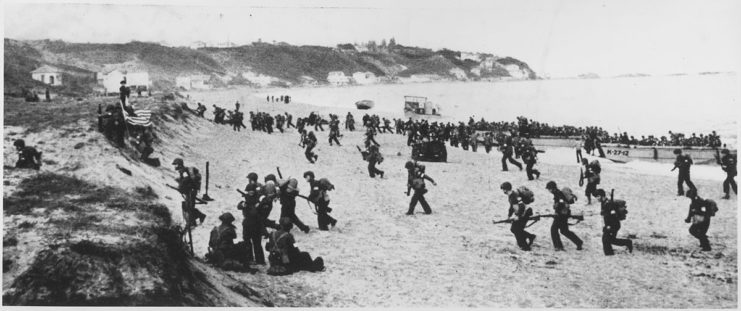
The Plan of Advance
The Allied aim was to break through to the eastern coast, where the ports of Bizerte and Tunis lay. Their approach was dictated by the landscape, which featured rugged mountains through which critical passes ran. They planned, therefore, to advance on three fronts – along the road to Bizerte in the north, to Chouigui Pass in the center, and around Medjez el Bab in the south.
First Clashes in the Centre
The Allies saw some initial success in the center. On November 25, American armored troops seized a German airfield and took Chouigui Pass, before backing off for the night. At first, Nehring panicked and pulled his forces back, but following orders from his superiors, he sent his tanks in.
The first clash between American and German tanks took place on November 26. The Americans held their ground in the fight with roughly equal losses on each side.
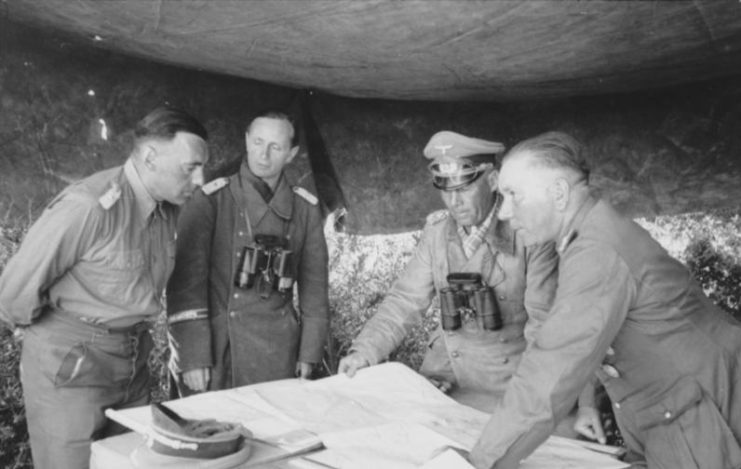
Fighting at Medjez
On the 25th, British troops backed by American artillery attacked the Germans defending Medjez el Bab. They were driven off, took a hill above the town, then lost that too.
Again, Nehring’s lost his nerve. Overnight, he withdrew his forces. The next day, American tanks and British infantry walked in.
War in the Air
Air power was a serious problem for the Allies. Their closest air base was seventy miles from the front, while the nearest German planes were only minutes away. Allied ground forces were subjected to attacks from above.
Even when the American flyers arrived, there were problems. They drove off the Germans on the 26th, only to become confused and attacked their own forces on the ground.
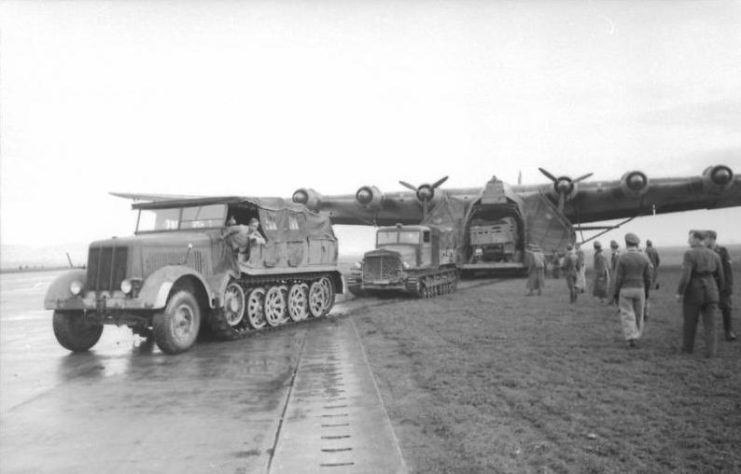
The Failed Approach to Bizerte
On the road to Bizerte, the Allies walked into an ambush in the pass between Green Hill and Bald Hill. German heavy machine-guns opened fire from the slopes, devastating the infantry and destroying 10 out of 12 gun carriers. The remaining troops retreated.
Meanwhile, British commandoes and American infantry had landed up the coast to hold the road open for the advance. Instead of connecting up with the advancing troops, they found themselves cut off and had to fight their way back past the Germans to their own lines.
Oudna
On November 29, the Allies tried another landing behind German lines. 500 British paratroopers jumped from American planes then made a night attack on an airfield at Oudna. The aim was to destroy Axis planes there, but in fact, their intelligence was incorrect – the Germans and Italians were not using the airfield.
Again, British troops had to fight their way back to Allied lines, losing half their numbers along the way.
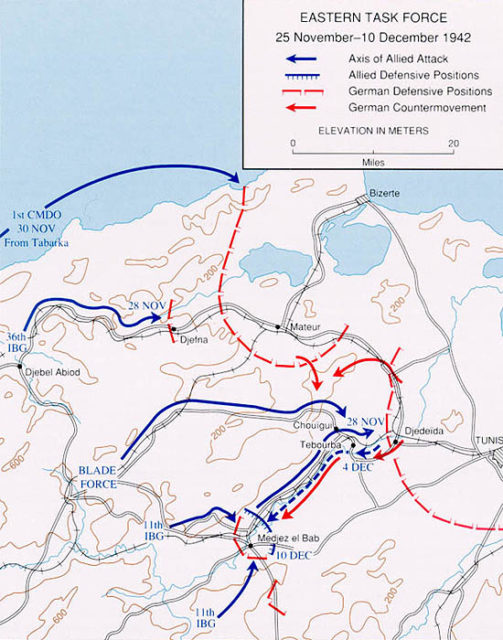
First Counter-Offensive
The Allies were preparing for another offensive when, on December 1, Nehring launched a counter-attack. A hastily assembled force of Axis troops attacked the Allied center.
While the scratched together unit was not ideal for the task, neither were the Allied troops facing them. Lack of coordination between American, British, and French units contributed to a shaky defense.
The Germans took a small amount of ground. It was enough. It halted the Allied advance and gave Axis troops high ground on which to build defensive positions.
Second Counter-Attack
As the Allies argued over what to do next, the Germans prepared another offensive. On December 10, they attacked Medjez el Bab. A column of German tanks assaulted the Americans defending the town.
German tanks destroyed their lighter American opponents. A flanking force, unseen during its approach, caught the Allies by surprise.
Late in the day, as the rain began to fall, the survivors pulled back, leaving the Germans in Medjez. The Allies were now considering a wider retreat.
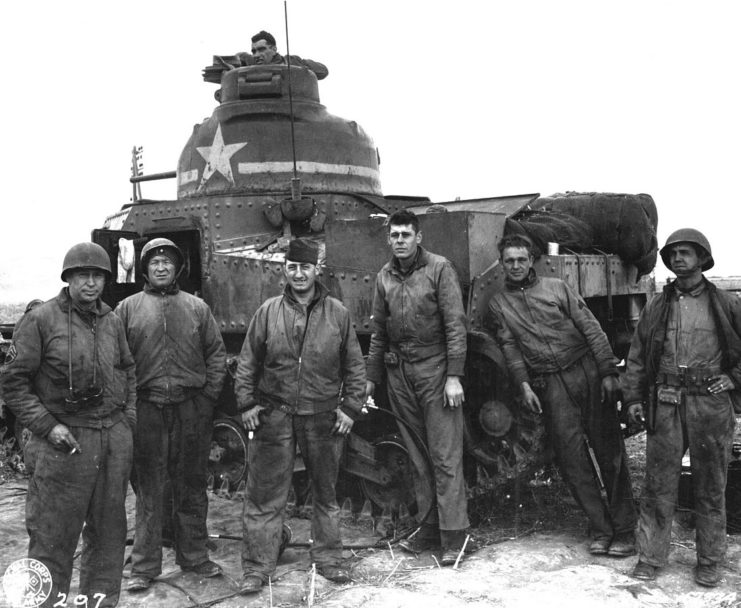
Longstop Hill
The last offensive action took place over Christmas.
Longstop Hill lay seven miles north of Medjez el Bab. From there, Axis forces coordinated air strikes and artillery against Allied advances in the area. The Allies had to capture it, to safely advance again in the south.
On the night of December 23, as tanks prepared for the advance, the British Coldstream Guards attacked the hill. They fought their way to the top, then handed the position over to their American comrades in arms.
The Germans, recognizing the hill’s importance, began a heavy counter-attack. The Guards rushed back to help the Americans and together they held on through Christmas Day. However, they did not have enough support or machine-guns to win. On the 26th, withdrawal from the area around Medjez began.
Calling Off the Offensive
The advance on Tunis was called off. In some parts of the line, the Allies had already retreated. Amid mud and rain, the Guards and those with them joined the retreat.
The Allies had failed in their first push for Tunis. They would have to try again.
Source:
Orr Kelly (2002), Meeting the Fox: The Allied Invasion of Africa, from Operation Torch to Kasserine Pass to Victory in Tunisia
